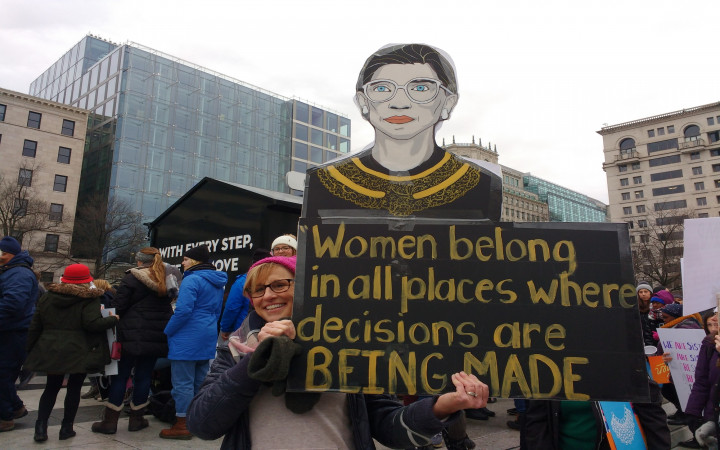Today’s Wonder of the Day was inspired by Claire from Detroit, MI. Claire Wonders, “Who was Justice Ruth Bader Ginsburg?” Thanks for WONDERing with us, Claire!
What does equality mean to you? Does it mean that your teacher treats everyone in your class the same? Many people would say it means protecting civil rights. Others might think it means that everyone has the same opportunities in life.
True equality is difficult to achieve. People around the world still don’t have the same rights and opportunities today. Still, some people make it their life’s work to fight for equality. Today’s Wonder of the Day is about one such person—Ruth Bader Ginsburg.
Ruth Bader Ginsburg was born on March 15, 1933, in Brooklyn, New York. As a child, she attended synagogue with her family and did very well in school. Later, she went to Cornell University and then Harvard Law School.
At Harvard, Ginsburg was one of only nine women in her class. At that time, it was still rare for women to enter law and similar fields. Often, this was due to discrimination. Both schools and employers could turn away women based on their gender.
In her last year of law school, Ginsburg left Harvard for Columbia University. She graduated at the top of her class. However, she had a tough time finding work as a lawyer after graduation. Many offices wouldn’t even interview her because she was a woman.
This wasn’t the first time Ginsburg faced workplace discrimination. Years earlier, she had moved to Oklahoma when her husband, Martin, was drafted into the Army. There, she worked as a typist. When she became pregnant with her first child, she was fired. Her employer thought that being a mother would hurt Ginsburg’s work.
As a lawyer, it was even worse. Thanks to many years of discrimination, women were few and far between in the field. With support from a former professor, though, Ginsburg finally found work in New York. It was the beginning of what would be an impressive career.
After experiencing discrimination, Ginsburg wanted to level the playing field for others. As a lawyer, she represented both men and women in gender equality cases. She argued and won six of these before the Supreme Court.
Ginsburg would keep fighting for equality for the rest of her life. She helped found the Women’s Rights Project of the American Civil Liberties Union (ACLU). She was the first woman to be a tenured professor at Columbia Law School. She also became an advocate for LGBTQIA+ rights.
In 1980, Ginsburg became a judge in the U.S. Court of Appeals for Washington, D.C. Thirteen years later, President Bill Clinton nominated her for the Supreme Court. Ginsburg was confirmed by the Senate with a vote of 96-3 in August 1993. She was the second woman to join the court.
As a Supreme Court Justice, Ginsburg was part of many major rulings. She helped end gender discrimination at the Virginia Military Institute. She also ruled with the court to legalize same-sex marriage. In another decision, she helped uphold parts of the Affordable Care Act.
Ginsburg is perhaps more well-known for times when she disagreed with Supreme Court rulings. She wrote strongly-worded dissents of many of these decisions. This included when the court ruled against a gender pay discrimination case. She was also against the court striking down part of the Voting Rights Act. She became known for signing her opinions with the words “I dissent.”
In her later years, Ginsburg became a cultural . Many people praised her staunch support of the rights of women and LGBTQIA+ Americans. They gave her the nickname “Notorious RBG.” This was a play on the name of the late rapper, The Notorious B.I.G. Ginsburg’s image and famous “dissent collar” were sold as jewelry, artwork, on t-shirts, and other items.
On September 18, 2020, Ruth Bader Ginsburg passed away. This came after a long fight with cancer. Days later, she became the first woman to lay in state in the U.S. Capitol. Many remember her as a great lawyer, justice, and advocate for equality.
What can you do to work toward equality for all people? It’s important for everyone to do their part. Talk with a friend or family member today about ways to make the world a more equal place.
Standards: C3.D2.Civ.1, C3.D2.Civ.4, C3.D2.Civ.12, C3.D2.Civ.14, CCRA.L.3, CCRA.L.6, CCRA.R.1, CCRA.R.2, CCRA.R.4, CCRA.R.10, CCRA.SL.1, CCRA.SL.2, CCRA.W.2, CCRA.W.4, CCRA.L.1, CCRA.L.2




